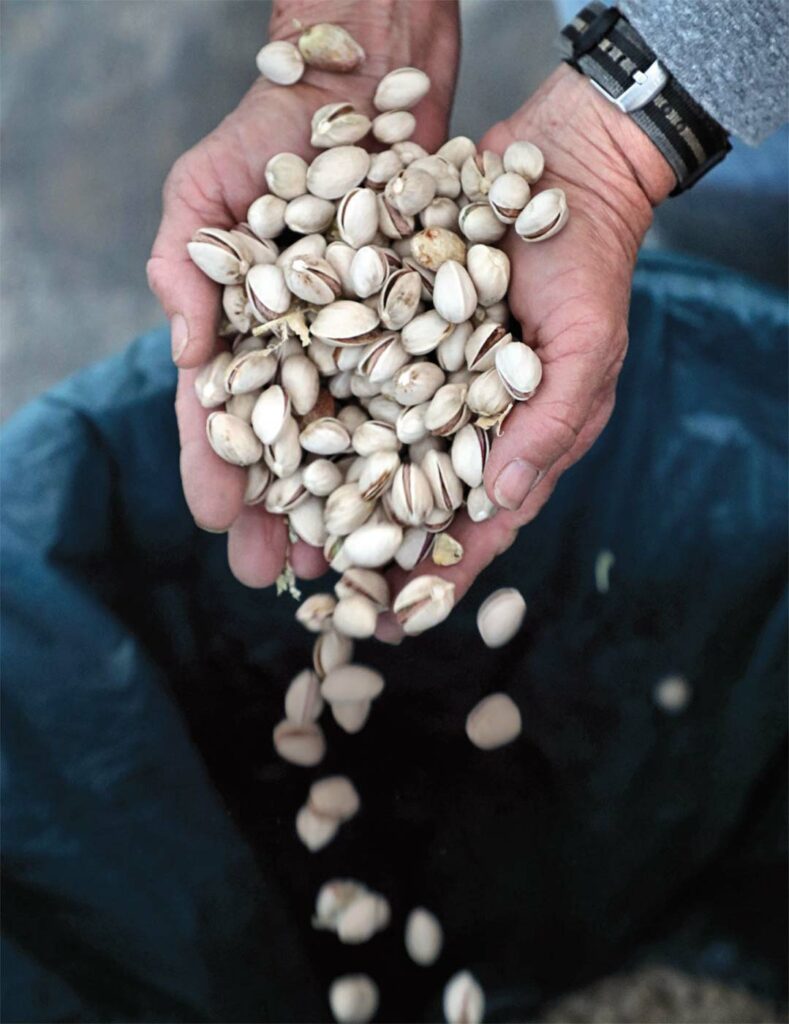
San Benito County couple grows organic pistachios for local farmers markets
PHOTOGRAPHY BY ROBERT ELIASON
Pistachios are meaty, green nuts that are actually a seed and botanically considered a drupe—a stone fruit akin to apricots, plums and almonds. The flowers and young fruit are beautiful, and when they ripen the hard shell that encases the nut splits open. When first harvested, pistachios are soft and bright green, but as they cure they became darker in color and sweeter with a harder texture.
Native to Central Asia, pistachios have been eaten since 6750 B.C. The trees were brought to Europe during the first century by the Romans, and cultivation spread through North Africa and Southern Europe where they thrived in long, hot summers. They were introduced to California gardens during the Gold Rush and by the 1900s were planted commercially with hardier cultivars developed in China to thrive in colder climates like California’s Central Valley. Since pistachio trees take about 20 years to reach full production, it wasn’t until 1929 that California began shipping pistachios commercially. Mature trees produce for over 300 years and grow 30 feet tall. They can yield 100 pounds per tree biannually; the alternate years’ yields are much less.
Some may be too young to remember, but pistachios used to be dyed a reddish pink color. There is uncertainty as to why, but one theory is that a Syrian importer dyed them so his product would stand out from his competition. The other more likely reason is that pistachios that are left to dry naturally don’t look very appetizing, therefore the red was used to make them more desirable. Once domestic pistachio production grew in the U.S. along with better methods for hulling and drying them, they were no longer dyed like nuts exported from the Middle East. In the 1980s there was an embargo placed on Iranian pistachios, and sanctions remained in place for many years, which also contributed to fewer red pistachios on the market. The U.S. is now the world’s second largest producer behind Iran, and 98% of pistachios sold in the States are grown in California.
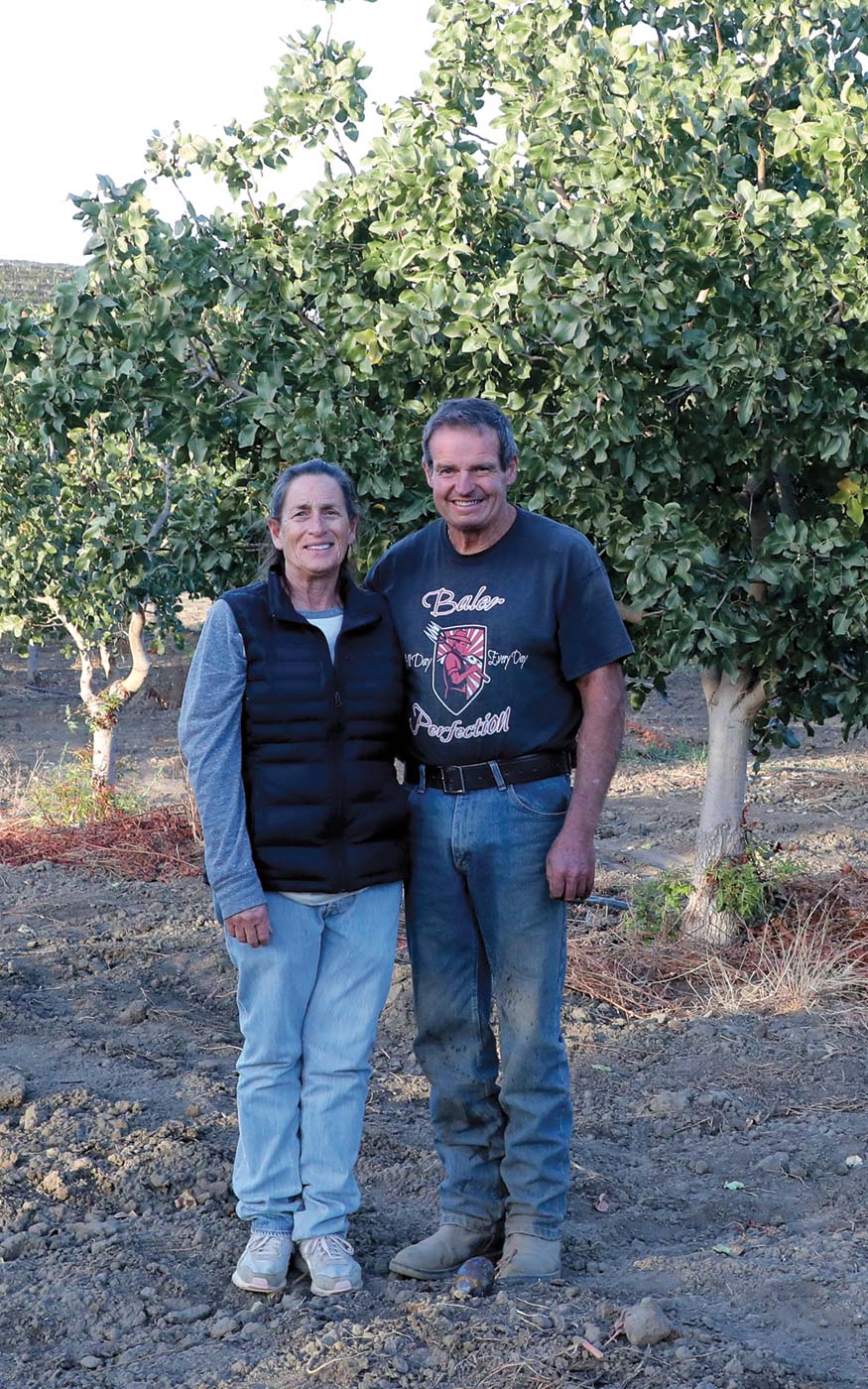
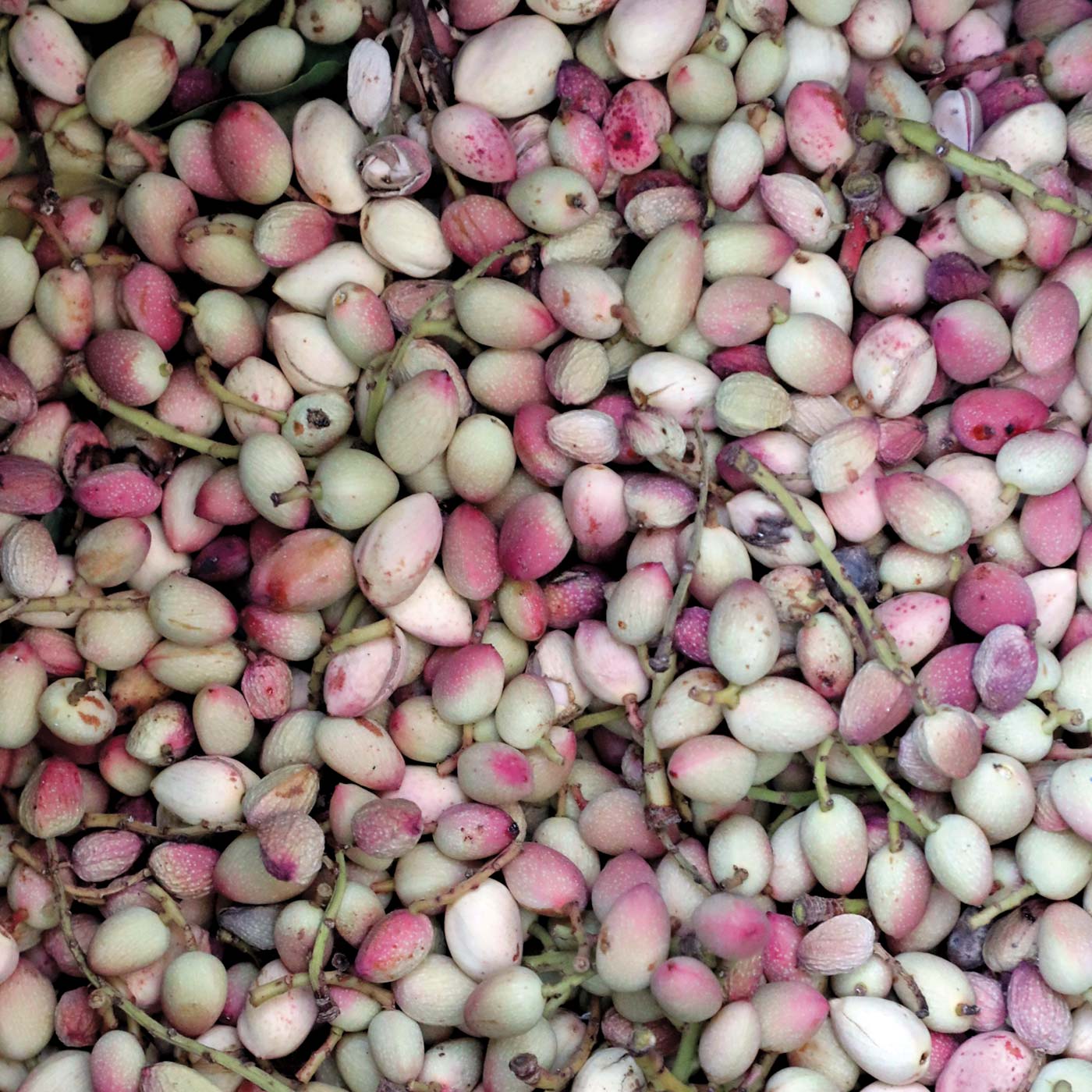
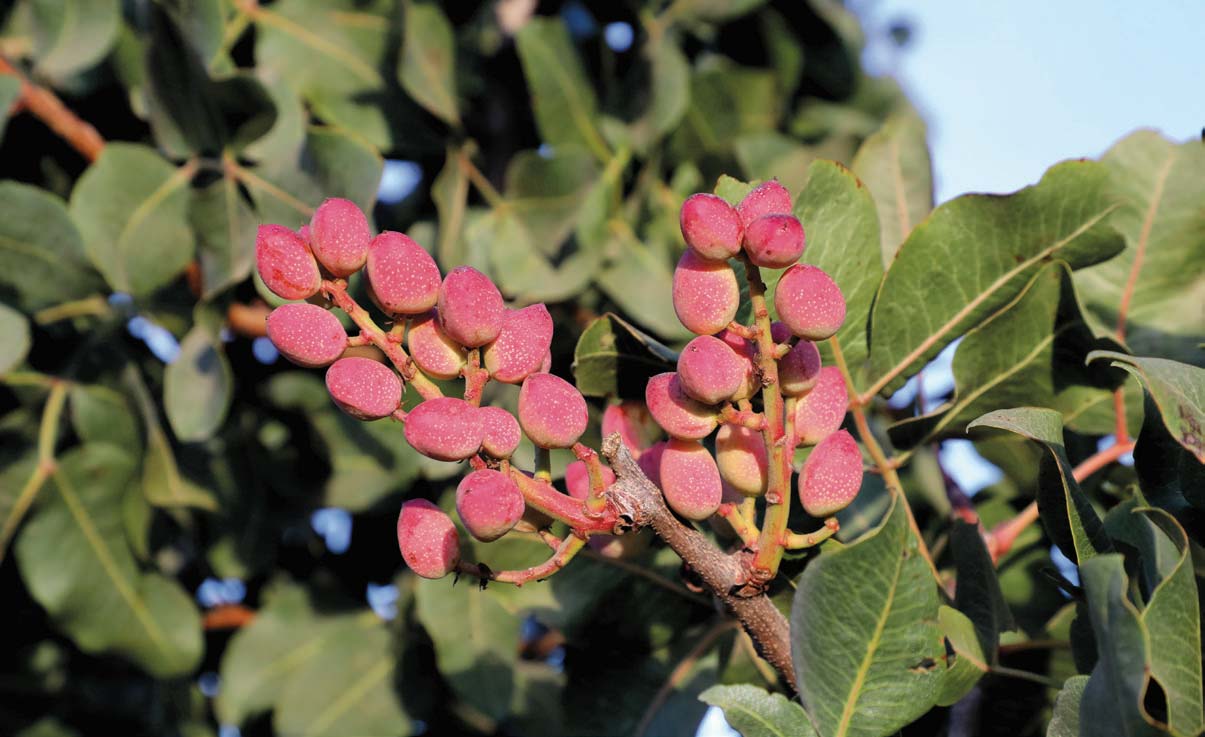
EATING AND COOKING
Pistachios can be interchanged with other nuts in recipes and most often replace pine nuts or walnuts in recipes. When ground in a blender or food processor, pistachios offer a wonderful green color and nice texture that can be made into pesto and salad dressings, like my favorite “pisto” sauce from Monterey’s Parsley + Fig. Owner Petrina Pinto’s Sicilian grandmother would make pisto, and her mom always used pistachios in her pesto. This inspired her to bottle pisto sauce, which can be used as a dressing, spread or dip. Petrina says the pistachios add a depth of flavor and texture that allow the dressing to be vegan without missing cheese as an ingredient. Pinto’s fresh dressings can be found at the downtown Carmel Farmers Market on Thursdays or at Hacienda Hay & Feed in Carmel Valley.
Personally I love to add pistachios to a fresh green or grain salad and include seasonal fruit like fuyu persimmons or mandarins and some goat cheese, or sprinkle roasted Brussels sprouts with the earthy, sweet nuts, dried golden raisins, white balsamic vinegar and olive oil. My holiday chocolate bark is topped with pistachios, crystalized ginger, goji berries (or cranberries) and sea salt. Pistachios make the most delicious nut milk, and adding a little rose water, cardamom and maple syrup makes it extra decadent. Try it cold or warm and top with some rose petals and pistachio crumbles. Be sure to save the nut meal for making nut pate or crackers, adding to homemade hummus or using as an ingredient in banana bread.
Pistachios are almost half fat, a third carbohydrates and a quarter protein. They contain feel good B vitamins, a significant amount of potassium (one ounce has as much as a banana), a decent amount of fiber and other essential vitamins and minerals. The FDA actually backed a claim that pistachios help reduce the risk of heart disease if eaten in moderation, and they do not contain cholesterol. Some studies show that they also contain natural melatonin, something to consider when choosing a late night snack.
GROWING PISTACHIOS
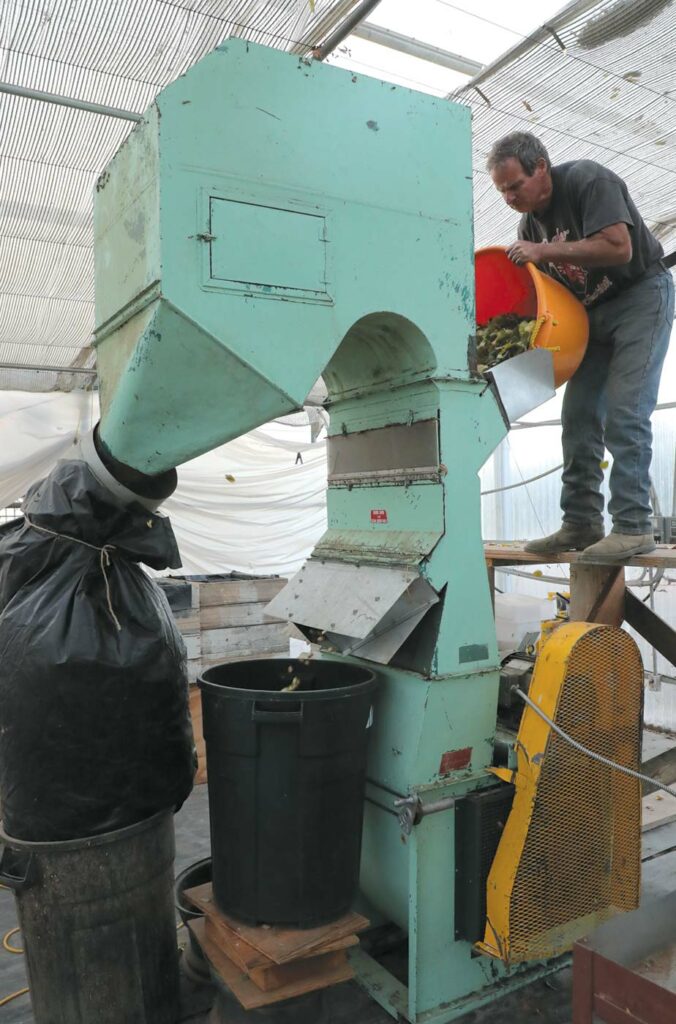
Tate Edwards and Donna Carbonaro met at a bar in Davis while attending college. She majored in avian sciences while he studied plant sciences. Eventually they purchased a property in Paicines and installed the first commercial planting of certified organic pistachios and pecans in San Benito County under the name CE Farm. They currently have two acres of pistachios and 11 acres of pecans.
Paicines, a remote town in San Benito County, has a very long, hot, dry growing season with cold winters. The weather replicates the Central Valley where pistachios are usually grown, but there are no other nut farms close by, which is both a benefit and a drawback. Because there are no other pistachio orchards in the vicinity, they had to plant more male trees for pollination. Every fifth tree in every fifth row is a non-producing male for pollination, therefore, 15% of trees don’t produce. The female trees are Kerman varieties, the males are Peters. Their newer trees are golden hills (females) and randy (male) varieties, which Edwards and Carbonara hope will have higher yields than the first planting. Luckily, they report no insect pest issues with pistachios. However, if they were growing in the Central Valley, the naval orange worm would be a problem due to the close proximity to orange groves.
The older trees were planted 10 years ago, a long wait for pistachios to finally produce. Carbonaro says that for the first eight years the trees just sit there looking like little twigs then they finally hit their growth spurt and shoot up two feet or more each year, expanding into a beautiful lollipop shape. The trees are only pruned to keep them from getting too tall, as they can grow up to 30 feet. The farm owners fertilize their pistachios with feather meal, fish emulsion and some rock phosphate.
Pistachios are alternate bearing trees, meaning they have a heavier harvest every other year. Luck has it that the pecans yield heavy when pistachios don’t, which keeps the workload even each season. This year yields were low, and ravens and crows discovered the nuts, so there will not be much left to sell. However if you hit the farm up early enough after this year’s harvest you should be able to load up. CE Farm sells at two markets—the Friday market in Monterey at Del Monte Center and in Aptos at Cabrillo College. There you can find fresh raw pistachios and pecans by the scoop. They will fill your own jar if you prefer. Carbonaro is conducting storage experiments with in-shell, roasted nuts to see how they hold up. Next season the two hope to offer in-shell and roasted options.
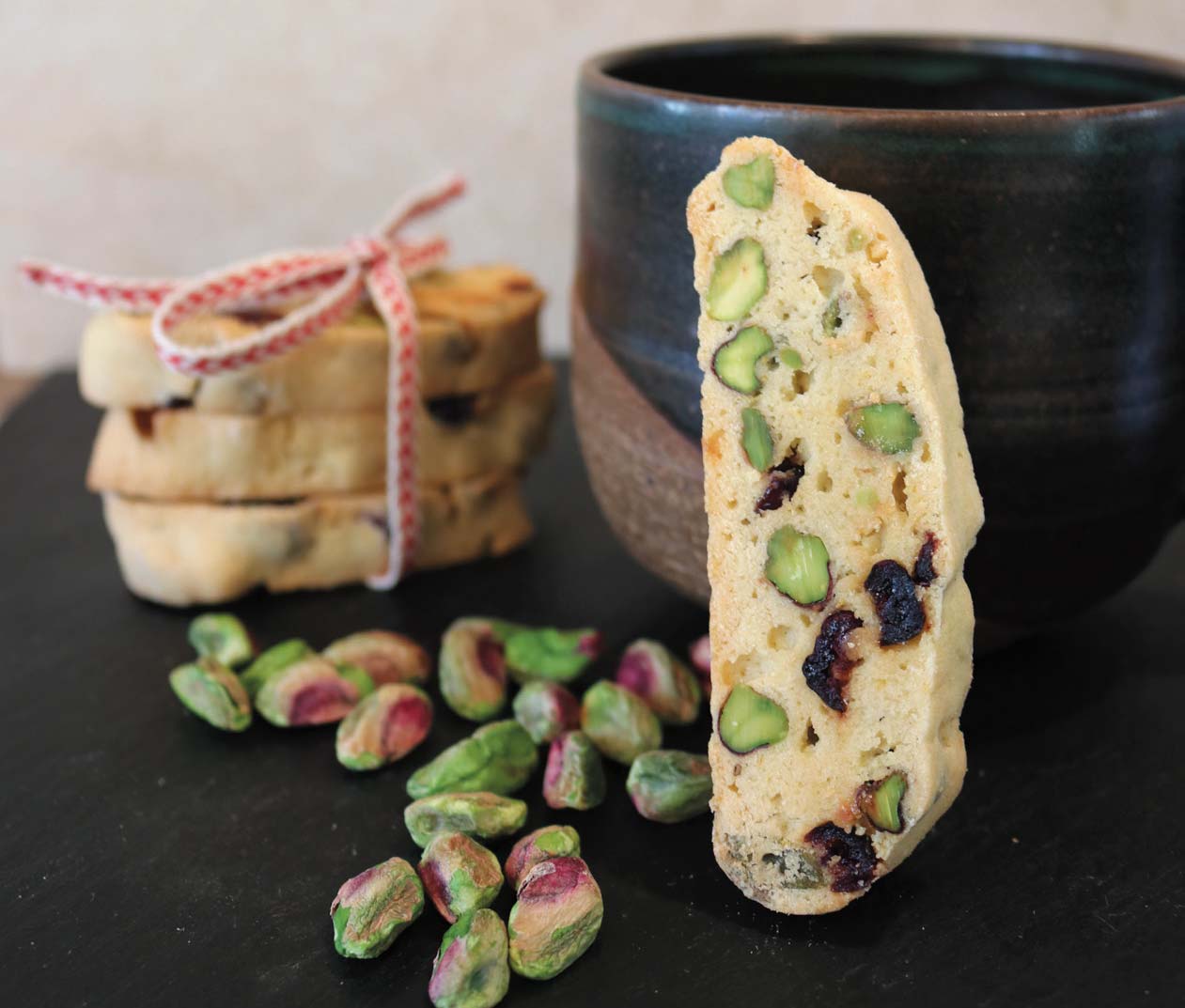
Pistachio and Cranberry Biscotti
These green and red studded biscotti are a holiday tradition at my house. The recipe is adapted from one I clipped from Bon Appétit magazine many years ago and, since they’re not too sweet, they go great with a cup of coffee in the morning. —Deborah Luhrman
About the author
Jamie Collins is the owner of Serendipity Farms and has been growing organic row crops at the mouth of Carmel Valley since 2001. She distributes her produce through a CSA, u-picks and farmers’ markets.
- Jamie Collinshttps://www.ediblemontereybay.com/author/jcollins/
- Jamie Collinshttps://www.ediblemontereybay.com/author/jcollins/
- Jamie Collinshttps://www.ediblemontereybay.com/author/jcollins/
- Jamie Collinshttps://www.ediblemontereybay.com/author/jcollins/



